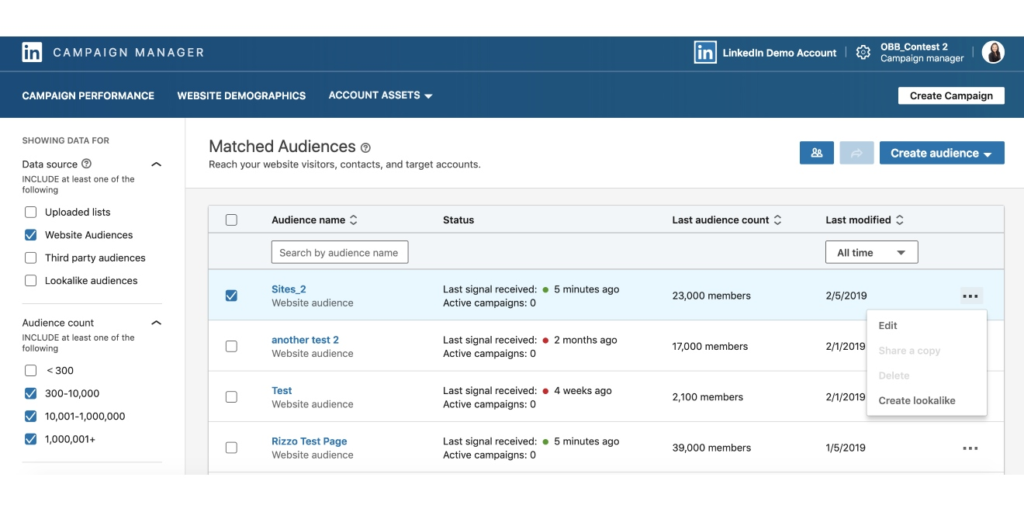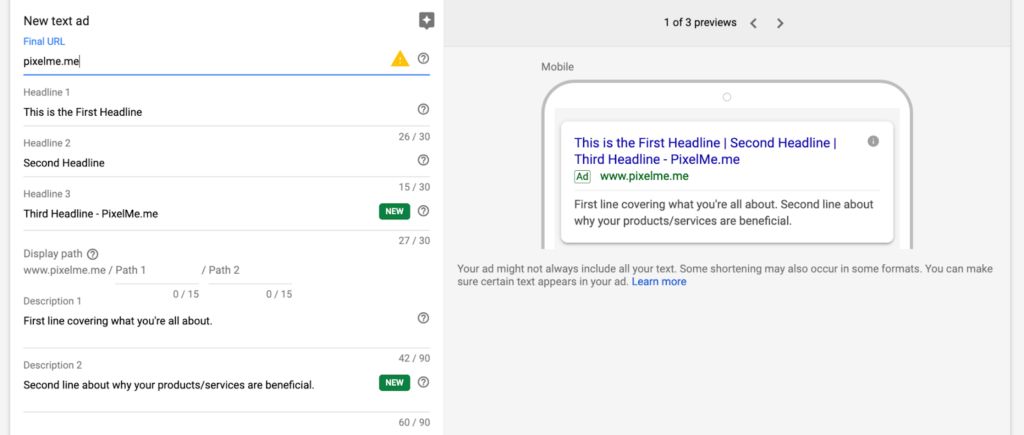With so many advertising platforms available today, it can be tough to decide which one is right for your business—especially when it comes to lead generation. Two of the most popular options are Google Ads and LinkedIn Ads, but they serve very different purposes.
In this blog, we’ll dive into how these platforms work, compare their key features, and help you decide which one is better suited for your lead generation strategy.
1. Understanding the Platforms
Google Ads is one of the most widely used digital advertising platforms. It offers various formats, such as Search Ads, Display Ads, and Video Ads, which can help businesses generate leads by targeting users based on their search intent or browsing behavior.
- Example: A company offering cloud storage services can run Google Search ads targeting keywords like “best cloud storage solution.” When a user searches this phrase, the ad appears, and if the user clicks, they are taken to a landing page designed to capture their information for lead generation.
Google Ads is great for businesses where users are actively searching for solutions. It works well for both B2B and B2C industries, including e-commerce, local services, and SaaS (software as a service) products.
LinkedIn Ads Overview

LinkedIn Ads, on the other hand, are specifically designed for B2B marketers. LinkedIn allows advertisers to target users based on professional details such as job title, company size, industry, and skills, making it a powerful tool for reaching decision-makers.
- Example: A B2B company selling HR software could run LinkedIn Ads targeting HR directors or managers at companies with over 500 employees. These ads may appear in the form of sponsored content, InMail, or lead generation forms.
LinkedIn is perfect for businesses that sell high-ticket products or services to other companies and are looking for quality leads from professionals in specific industries.
2. Target Audience Comparison

Google Ads Targeting Capabilities
Google Ads allows advertisers to target based on keywords, which reflects user intent. If someone searches for “accounting software for small businesses,” you know they are actively looking for a solution, making them a hot lead.
- Scenario: A digital marketing agency could target keywords like “best marketing services” or “hire a marketing agency” to attract potential clients who are ready to buy.
You can also narrow down the audience by geographic location, language, device, or even online behavior through display campaigns.
LinkedIn Ads Targeting Capabilities
LinkedIn Ads excel in professional targeting. You can narrow down your audience by job title, company size, seniority level, and even industry-specific skills. This makes it easy to reach decision-makers.
- Scenario: A software company selling to large enterprises could use LinkedIn Ads to target IT directors or CTOs at companies with over 1,000 employees. This is much harder to achieve with Google Ads, where professional details aren’t as easily accessible.
3. Ad Formats for Lead Generation

Google Ads Formats
- Search Ads: These appear at the top of Google’s search results and are effective for capturing intent-driven leads.
- Display Ads: These show up on websites and apps in the Google Display Network, useful for raising brand awareness or retargeting.
- YouTube Ads: Video ads that appear before or during YouTube videos.
- Lead Form Extensions: Google allows businesses to collect leads directly from search or display ads using pre-filled forms.
- Example: A real estate company could use search ads targeting phrases like “buy apartment in Noida” and include a lead form extension to directly capture user information.
LinkedIn Ads Formats
- Sponsored Content: These are native ads that appear directly in users’ feeds, often with a call-to-action (CTA) to download a whitepaper or sign up for a webinar.
- Message Ads (InMail): Personalized messages sent directly to users’ inboxes, perfect for one-on-one engagement.
- Lead Gen Forms: LinkedIn’s lead generation forms are pre-filled with users’ professional details, reducing friction and increasing form submission rates.
- Example: A consultancy firm could send InMail messages inviting CEOs to a private webinar. The LinkedIn lead gen form makes it easy for attendees to sign up without needing to manually enter their information.
4. Cost Comparison: CPC, CPL, and ROAS
Google Ads Cost Breakdown
Google Ads operates on a cost-per-click (CPC) model, where advertisers pay each time someone clicks on their ad. The CPC can vary widely depending on the competition for certain keywords.
- Scenario: A law firm could bid on the keyword “best law firm for corporate cases.” Since this is a high-competition keyword, the cost per click might be around $20–$50. However, the firm could also retarget website visitors with lower-cost display ads, bringing down their overall cost-per-lead (CPL).
LinkedIn Ads Cost Breakdown
LinkedIn Ads tend to be more expensive than Google Ads, especially when targeting high-level professionals like CEOs or directors. The CPC can range from $5 to $15, and the CPL can be higher because of LinkedIn’s premium audience.
- Scenario: A software development company running a LinkedIn lead generation campaign targeting CTOs may spend $10 per click, but since these are decision-makers, the higher CPL is justified by the quality of the leads.
5. Lead Quality: Which Platform Delivers Better Qualified Leads?
Google Ads Lead Quality
Google Ads can bring in a large volume of leads, but the quality of those leads depends heavily on the keywords you choose and the strength of your landing page. You may get a lot of leads, but not all of them may be ready to buy.
- Example: A digital marketing agency might get dozens of inquiries for a generic keyword like “marketing services,” but only a small percentage could be qualified leads.
LinkedIn Ads Lead Quality
LinkedIn typically generates higher-quality leads because the platform targets users based on professional criteria. You’re more likely to reach decision-makers with buying power.
- Example: A leadership development company targeting HR executives at Fortune 500 companies will likely generate fewer leads compared to Google Ads but much higher quality, as these executives are key decision-makers.
6. Conversion Funnel & Retargeting

Google Ads Conversion Funnel
Google Ads allows you to target users at every stage of the funnel—whether they’re in the awareness phase or ready to convert. Retargeting ads on Google’s display network can be used to re-engage users who have already visited your site.
- Example: A SaaS company could use search ads to capture users searching for “best CRM software” and then retarget those visitors with display ads offering a demo of their CRM product.
LinkedIn Ads Conversion Funnel
LinkedIn shines in longer B2B sales cycles, where multiple touchpoints are needed to convert leads. LinkedIn’s matched audiences and email targeting help nurture leads through the decision-making process.
- Example: A consulting firm could use LinkedIn to first engage users with a sponsored whitepaper, and then retarget those users with a CTA to book a free consultation.
7. Best Use Cases for Google Ads and LinkedIn Ads
When to Choose Google Ads
- Best for B2C, e-commerce, and local businesses.
- Effective for industries with high search intent like legal services, healthcare, and retail.
- Scenario: A local dental clinic could run search ads for “best dentist near me” to attract nearby customers ready to book an appointment.
When to Choose LinkedIn Ads
- Best for B2B, professional services, and high-ticket products.
- Ideal for reaching decision-makers like CEOs, HR managers, and IT directors.
- Scenario: An enterprise software company could run LinkedIn Ads targeting CTOs at companies with more than 1,000 employees to generate qualified leads for their product demo.
8. Real-World Case Studies
Case Study: Google Ads for Lead Generation
A B2C e-commerce company selling fitness gear used Google Ads to generate leads by bidding on high-intent keywords like “buy yoga mat.” Through a mix of search and retargeting ads, they were able to reduce their CPL by 20% and increase lead volume by 30%.
Case Study: LinkedIn Ads for Lead Generation
A B2B SaaS company offering project management software used LinkedIn Ads to target project managers at mid-sized firms. By focusing on decision-makers with LinkedIn Lead Gen Forms, they were able to generate higher-quality leads at a higher cost, but with a 40% better conversion rate than Google Ads.
9. Conclusion: Which Platform is Better for Your Business?
Both Google Ads and LinkedIn Ads have their strengths, but the right choice depends on your business type and target audience. If you’re in B2C or need a high volume of leads, Google Ads might be the better fit. On the other hand, if you’re in B2B and need to reach specific decision-makers, LinkedIn Ads is likely to generate higher-quality leads, though at a higher cost.
In the end, the best platform for you will depend on your budget, audience, and lead generation goals.


